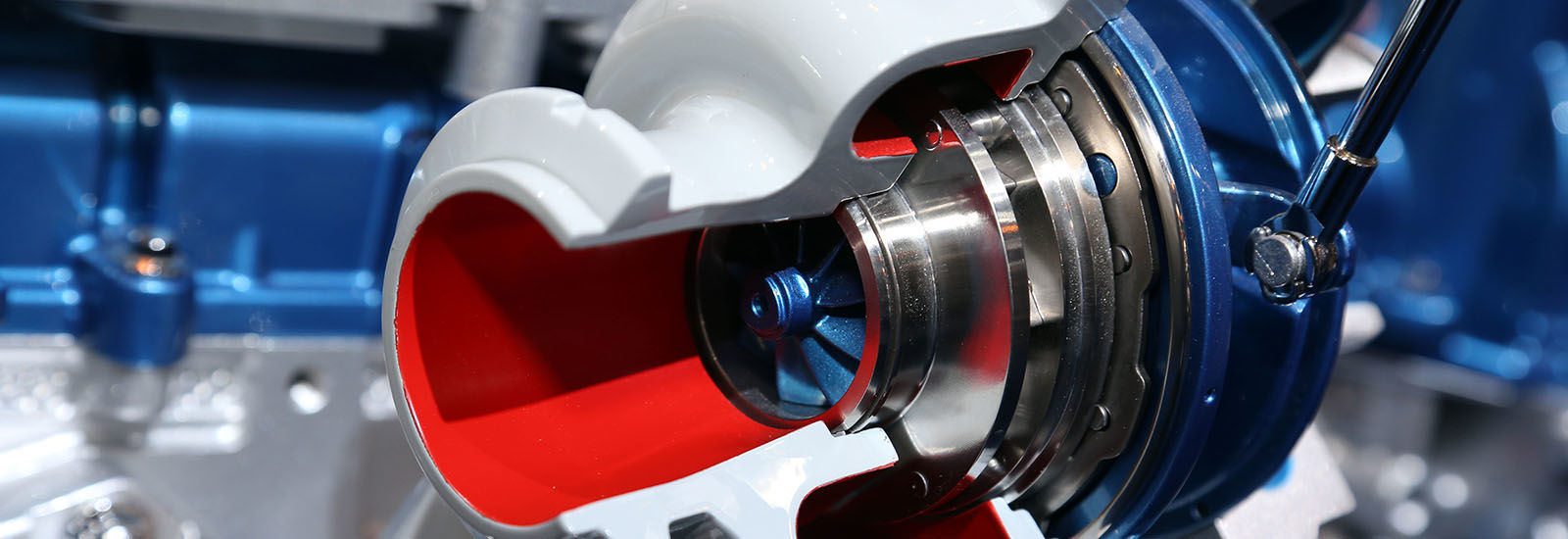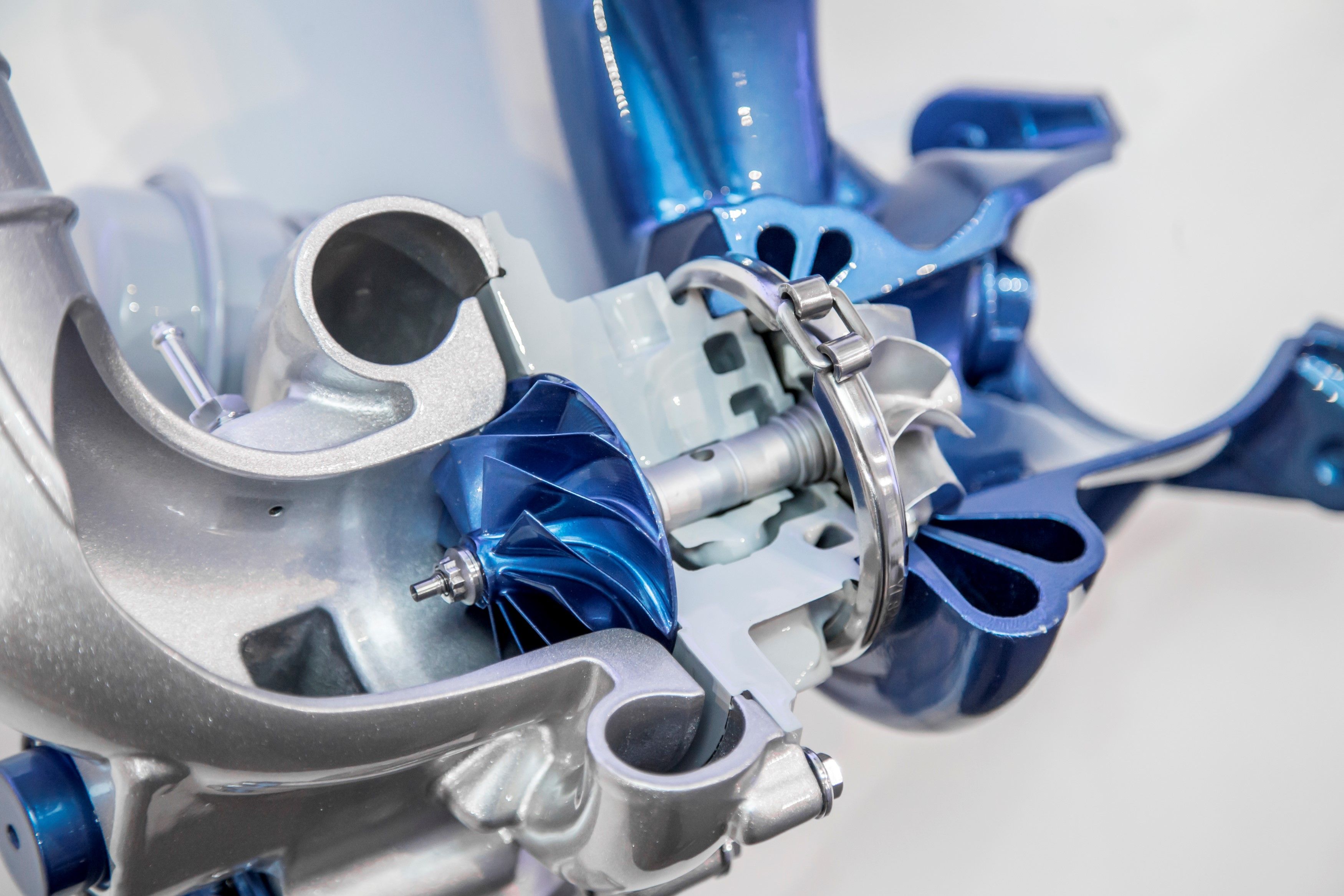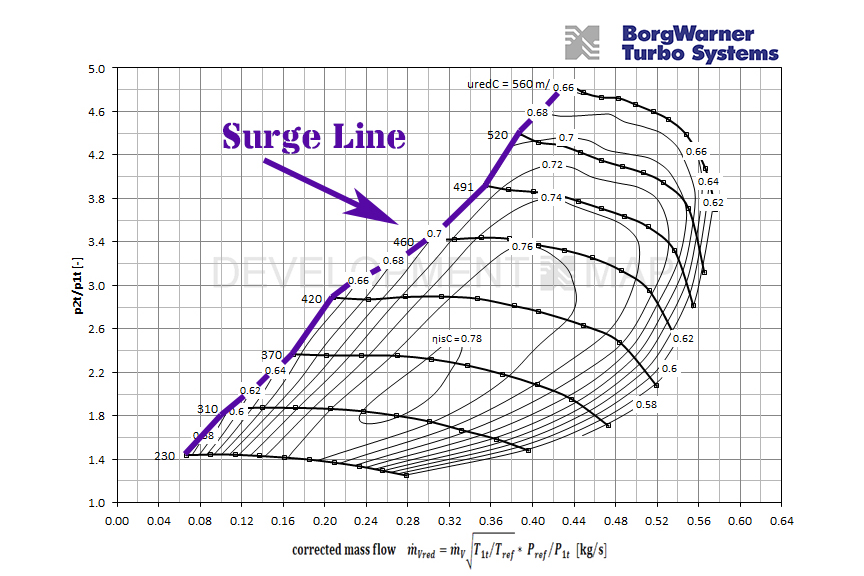Boost Control Strategies In Modern ECU's.
Here at Motorsport Developments we have been recommending, supplying and fitting electronic boost controllers to turbocharged petrol vehicles for the best part of 20 years, largely because they are a great way to add some decent boost control to a management system that can sometimes be a little lacking for what we may wish to achieve as performance tuners.
However, in this last few years we have actually been taking them off vehicles that come in with them fitted as we see them as a downgrade to certain management systems.
A recent customer discussion about this gave me the idea for this months blog about modern ECU boost control strategies and how they often now make an after-market boost controller seem woefully old fashioned.
As per my last few blogs, I will use the latest Ford EcoBoost platform to describe this in some more detail as it’s a platform that is developing rapidly and is here to stay.
First of all let’s look at a few facts.
Engine power generation is all about fuel, air and spark. As long as we get those three things right we will (within reason) get more power output. However, the engines flexibility, its power-band and importantly for this topic, its throttle response are all about how fast we can deliver those things.
Now fuel and spark are of course quite simple with regards to supply speed as we are supplying those directly to the cylinder electronically. But the air supply... well that is a whole different story.
Why is the air supply so complex? Surely it's just air?
Yes it is, but we measure an engines driveability and flexibility starting with throttle response, the way it revs for us and the way it responds to our pedal inputs. We all know that moving the throttle allows more air in, but we need to make that air available first, and in turbocharged applications where it needs to be under pressure… that whole process takes time, and the more time it takes, the less responsive the engine..
In essence, throttle response can be described as the speed an engine responds to your request for more power. Let's say you are cruising along in 5th gear at 50 MPH using just 50 BHP to maintain your road speed and you suddenly have the need for an additional 100 BHP to get yourself out of trouble, so you plant the throttle down and expect a result.
In a non-turbocharged car, perhaps a nice big V8, you would expect to get exactly what you asked for almost immediately. That is what we would call fast throttle response.
In old technology turbocharged cars, you would expect to feel a delay as the power starts to build slowly and with it you can hear and feel the turbocharger coming “on boost” … Whilst some of us love that kind of engine, that is generally what I would term as poor throttle response.
Anyone lucky enough to have sampled a modern turbocharged petrol engine will have noticed they feel much more like the powerful normally aspirated engines we described earlier. Almost instant throttle response and no real feel of “coming on boost” at all. That is down to modern turbochargers allied to modern boost control strategies. This blog is about the software side of things.
To explain how these software strategies work, I need to explain a little about what the software is trying to control…

Brief turbocharging facts:
A turbocharger simply compresses air. It sucks it in the front, accelerates it to a high speed and pushes it out into your intake system. In doing so, the pressure in the intake rises as we force compressed air into a fixed space. It is comparable to pumping up a bicycle tyre, the more we pump in, the higher the pressure gets.
Now, the compressor doing all this work is spun by a turbine sat in your exhaust flow. Think of this like a kids windmill. You blow air on it and it spins. The more air you blow on it, the faster it spins, but the one in your turbocharger is heavy and made of metal, so it needs quite a lot of exhaust gas flowing through it to spin it up to its operating speed, which is typically in excess of 100’000rpm.
Since the dawn of turbocharging, we have been controlling this turbine by way of the wastegate actuator. A canister with a spring and diaphragm inside that simply applies a spring pressure to a turbine bypass gate (wastegate) to keep it shut. Fitting one with a 10psi spring inside it meant that if we sent 10psi or more to it then the wastegate would open, direct gas away from the turbine and slow it down. Remove that 10psi, the gate would close and the turbo would speed up again. Simple really and the control concept has not changed in decades.
The physical efficiency of the turbocharger can be improved in a few ways, we can improve the efficiency of the design so that the same size and weight compressor and turbine respond faster whilst flowing more compressed air, we can improve the exhaust nozzles that direct exhaust gas onto the turbine such as with the latest twin scroll turbochargers that use two smaller nozzles to direct pulse matched exhaust gas to the turbine instead of one large one like the old school turbos, or we can improve the turbine shaft and compressors weight so that it’s easier to spin to speed. Ideally, we will do all three (I’m looking at you Borg Warner EFR).
You must be getting to this point and thinking “why is Stu boring us with a turbocharger 101 class?” Well I am just reiterating a simple fact... The turbocharger is a mechanical device and no matter how well we improve its design, there is always a delay between us “asking” for an increase in boost pressure and that increase in boost pressure actually reaching our engines cylinders because we have to spin this thing up to a faster speed and that in itself takes time.
Remember... The extra exhaust gas required to drive the turbocharger to a higher speed is coming from the compressor side of the turbocharger, through the whole intake system, into the engine and pushed back out into the turbine making it speed up, and round we go again. It is a very slow path to victory... the length of that path is called Turbo Lag and it’s inherent and unavoidable in any system utilising just the wastegate to control intake manifold pressure.

If only we could have the turbocharger sat there at a higher boost, ready for our demands!
Imagine if we could have the turbo already spun up to a higher speed and producing a little more boost than we are actually using so that the pressure is there, ready to use on demand! Sounds like fiction doesn’t it, but its now a reality. Modern management systems such as that controlling Ford EcoBoost engines do exactly that, and they do it by using two pressure control methods instead of one;
- Wastegate
- Throttle Blade
And it also splits the intake path into two separately controlled systems too:
- Air intake system (before throttle body.. controlled via the wastegate)
- Intake manifold (after throttle body… controlled via the throttle body)
Those two systems are then modelled with two different pressure metrics;
- Throttle Inlet Pressure (TIP)
- Manifold Absolute Pressure (MAP)
Now let's look at a scenario:
The ECU sees any driver request as torque in Nm. So let’s say you put your foot down and request 200 Nm of torque. The ECU quickly decides that it needs an intake manifold pressure of 10psi to achieve that particular air load and torque output… It starts to apply its unique Ford logic to this process which results in a request path that looks something like:
NM torque (Drivers Requested Torque) -> Volume of air required in the cylinder (Load) -> Manifold Boost pressure (MAP) -> Pre throttle pressure (TIP)
The drivers torque request has now been converted from Nm into load, then into a required manifold pressure and finally into a required throttle inlet pressure. This is where it gets clever… (As if it wasn’t already!) The ECU now starts to control the throttle inlet pressure and the inlet manifold pressure independently. The wastegate control side of the system is now always targeting a “desired TIP” and that figure is usually higher than the desired MAP. Please remember that fact as it is key to understanding the system.

Not so wide open throttle…
So we have our 200 Nm target and we have, via wastegate control, a throttle inlet pressure that is higher than our requested manifold pressure. We call the difference between TIP and MAP the “Throttle Plate Delta Pressure” and this intentionally generated pressure difference is what makes the modern control system work.
The ECU is now able to control the inlet manifold pressure by regulating the amount of airflow allowed to pass through the throttle blade from the intake system. Having a little more air pressure in the intake system than the manifold gives us an instantly available reserve of pressurised air and thus instantaneous throttle response when needed. Let me try and put that into a couple of scenarios.
Example 1: 1992 Escort RS Cosworth.
Really old school – manual throttle and waste-gate only boost control.
Let's assume we are at partial throttle and we have 10psi TIP and 10 psi MAP.
If we suddenly request more torque and need 15psi in our manifold in order to generate it, we open the throttle wide and… nothing much happens, we need to wait for the turbo to increase speed and generate that extra boost to pressurise the inlet pipework and intercooler etc, up to the required 15 psi. That takes time… Time that we call turbo lag!
Example 2: 2017 Focus RS MK3.
Let’s assume we have the same 10psi MAP, but the modern ECU is regulating it there by having a partially closed throttle against a 15 psi TIP. If we suddenly request more torque and need 15psi in our manifold in order to generate it, can you see that all we need to do is open the throttle a little more to let a greater volume of air flow and pressurise the manifold up to 15psi?
No time delay… We have an instantaneous air supply sat right outside the door (throttle blade) waiting to come in!
Excess pressure regulation:
Those of you who know a little about turbochargers may well be wondering why the compressor does not run into its surge line in this scenario? Surge, for those of you unfamiliar with the term, is when the compressor is forced via the turbine speed to generate air pressure and volume that the engine cant consume. In this situation it will move into what’s called the compressor surge-line, which can cause the turbo some serious damage. As you would expect, boosting against part closed throttle situations will promote surge.
But fear not... compressor life has been well catered for by the model in the ECU because the it contains the turbochargers compressor and turbine maps along with detailed surge-line information so during any operational periods where there may be a danger of hitting the surge line, the ECU simply opens up the engines boost pressure bypass valve (dump valve) to allow the excess air volume to recirculate back into the intake, thus relieving the situation.

Are there any downsides to these pre spool strategies?
Yes, potentially faster turbocharger wear… higher charge temperatures and higher exhaust back pressure causing slightly worse fuel economy mainly spring to mind. But the engines throttle response improvements more than make up for the negatives and some vehicle eco modes disable the strategies when cruising. Ones with electronic gates go a step further and open the gate up for better economy too.
So why do people disable these torque and boost control features?
Because these torque modelled systems are extremely complex to get right and it is quite simply much easier to get more power by turning it all off. Set the wastegate control valve duty to give us the boost we want and see what power it makes. Need more power? Increase waste-gate duty and add fuel. It's much easier and faster to do that than it is to try and learn how this complex system works and actually rescale the original model so that we can just “ask” for the 600NM you need and let the ECU get on with it.
Wherever possible it's best to work with the OE strategy. They have spent billions of pounds and man hours designing and creating these amazing new strategies. Regardless of what some would have you believe, we generally speaking wont better them in our little tuning companies. Some tuners out there are of course shouting about how they have got EcoBoost to run with no throttle closures ever and how much better than the Ford calibrators they are. It just shows me they don’t truly understand why it was closing in the first place.
Does all this only apply to very new management systems?
Not at all. Ford presented the main patent for this control system way back in 2009 and has been using it in one form or another on road cars since 2011, for example, ALL EcoBoost vehicles have it.
Even the mid 2000s Ford systems like the Ford Focus RS and ST models that were not using this amazing throttle delta pressure strategy seen in EcoBoost engines still really need to have ECU control of the air pressure to work at their very best.
This is because they too target torque and control load to achieve it via the turbocharger and use throttle angle to regulate it. The system simply cannot work if some other device is deciding how much load the manifold is going to see.

Summary:
Hopefully you can see that many modern systems need to have their own control of the boost in order to run the way the manufacturer intended. So many tuners struggle with these super complex torque modelled systems and just manage to find a way to disable some of the magic and dumb the system back down to what is, to all intents and purposes a good old fashioned 1980s wastegate control system that targets nothing at all, let alone a specific torque figure.
This way of tuning is always going to be worse than refining the awesome OE system, it is always going to be slower reacting too. A system designed to overshoot will always be faster than a system that just runs a fixed duty cycle. Admittedly it can be made to feel more aggressive and exciting at low end, but from a control point of view its still a lot worse as even the torque ramping rate is controlled for good reason on modern DISI (Direct Injection Spark Ignition) engines. A quick Google of "LSPI" (Low Speed Pre Ignition) will explain why that is the case.
With torque modelling disabled you can also expect a great deal of inconsistencies in power delivery during differing atmospheric conditions as the OE system models the charge density perfectly so it doesn’t matter if it is -10c or +40C outside, nor does it matter what height you are above or below sea level, it will work out precisely what it needs to deliver exactly the torque it was asked for, using more or less boost as needed. That is far from the case with a purely wastegate controlled system and it simple can never be the case with an after-market boost controller installed.
We see a great many vehicles here with an after-market boost controller running large boost numbers with low throttle openings as the management fights to control air load with what it is interpreting as an overshooting boost control system. That just results in slow response, large air charge temperatures and less than optimal power outputs needing big boost pressures. Naturally all the over-boost / under-boost error codes and routines are also turned off to keep the management light quiet.
It’s very common that we advise a customer to let us reconnect the factory boost solenoid and install a calibration that uses it properly, but as you can imagine, they can be hard to persuade. But those that do take our advice almost always find that we then run less boost and make more horsepower and the customer says it’s like driving a modern, responsive car again.
Further Reading...
If you are interested to read more about how these systems are modelled in actual Nm of torque and convert your torque request into air loads, you will find the blog I wrote about Ecoboost torque control will tie in very nicely with the one you have just read.
Author:
Stewart Sanderson - June 4th 2018




